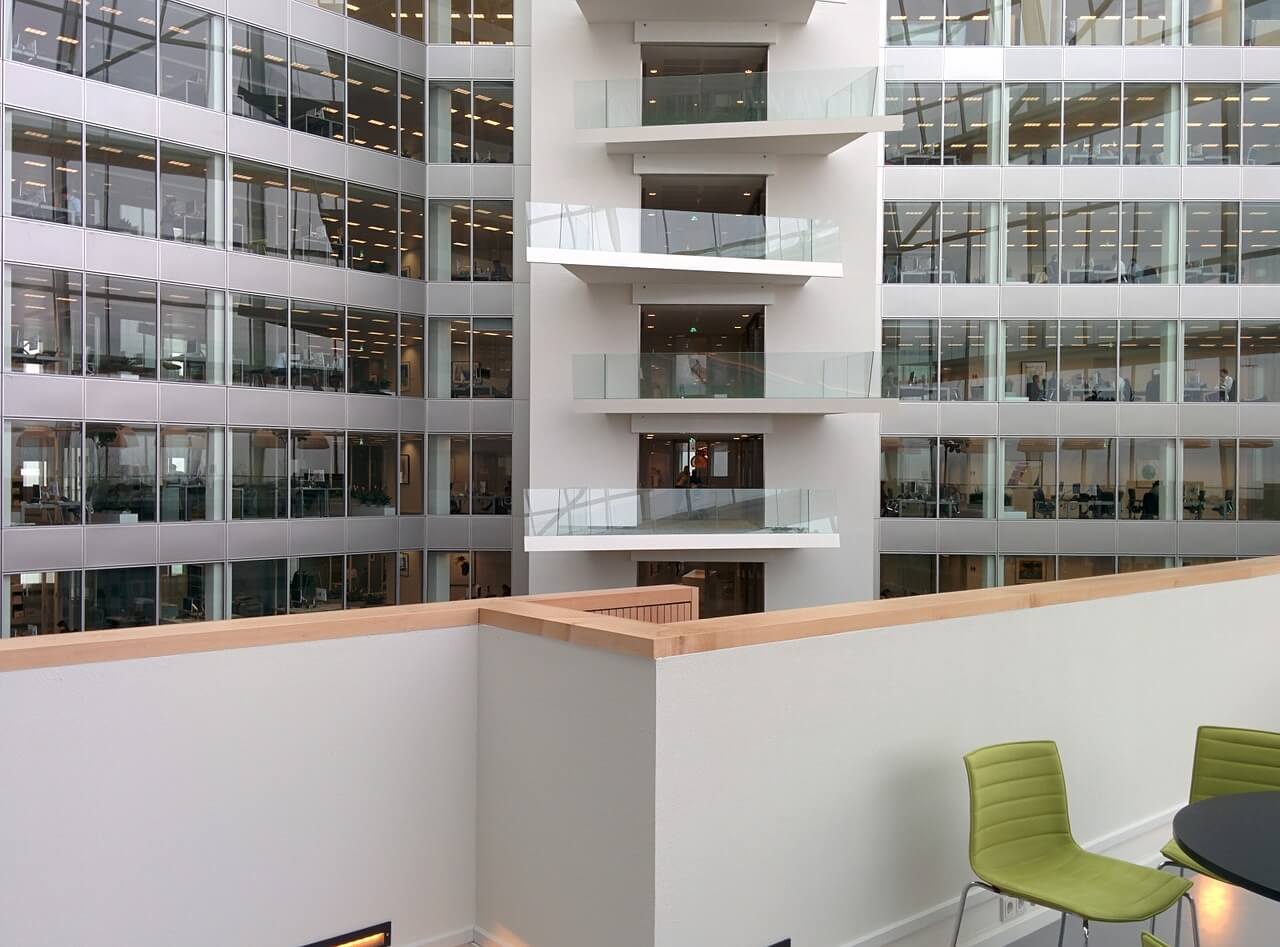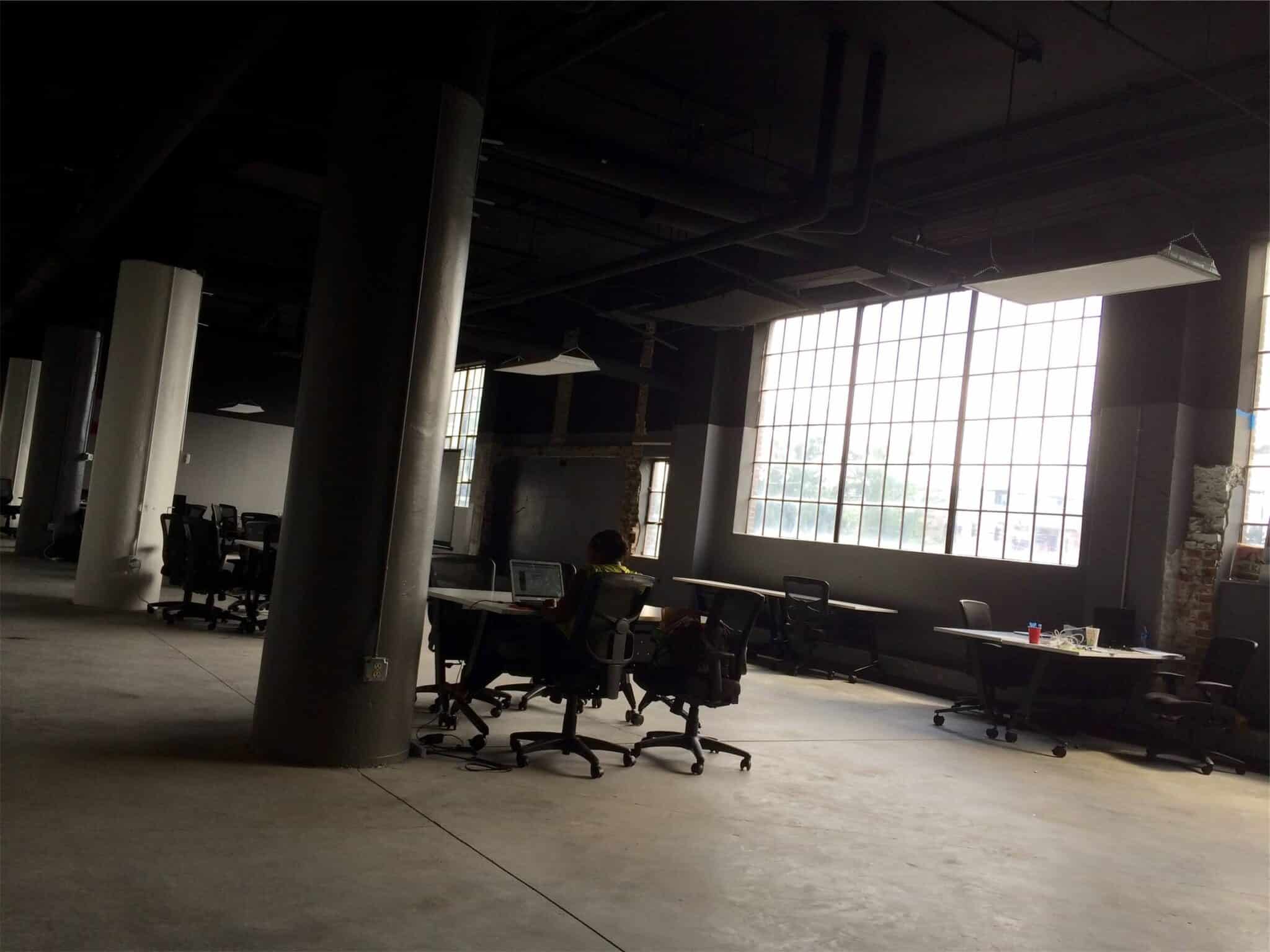Workplace Data: If You Don’t Measure It, You Can’t Manage It.

 An abundance of records exist measuring the relationship between employers and employees – but what about the middle ground? What about the relationship between the building and the employees that are placed inside it?
An abundance of records exist measuring the relationship between employers and employees – but what about the middle ground? What about the relationship between the building and the employees that are placed inside it?
If we don’t measure this relationship, we can’t effectively manage it. We sat down with the Founder of world’s largest workplace effectiveness measurement standard to learn more.
How does your workplace measure up? To dive deep into the trenches of global workplace standards, we had a candid conversation with Tim Oldman, Founder and CEO of Leesman Index. Benchmarking the performance of over 1,450 office locations in 50 countries, Leesman has surveyed more than 160,000 employees to date – and that number is steadily growing by about two to three thousand respondents a month – making Leesman the largest and most comprehensive workplace effectiveness database in the world.
With a background in architecture and interior design, Tim’s journey through transport design, retail and leisure, eventually led him to designing corporate office environments. It was there he discovered a missing link in the office design work he was doing.
TO: What I found was this sort of woeful lack of data and evidence on which to base design and build a business case for the development of interior design projects or architecture projects. Other than cost of occupancy and utilization data – that was all pretty well covered. But there was nothing that could tell me or my clients what their return on investment was from an occupying perspective.
In 2009, Tim came up with an idea around a standardized occupancy evaluation technique that would measure how a workplace was working for the employees and, therefore, onwardly for the corporate organization.
TO: I launched back in 2010 with the basic premise to the market that we were a wholly-independent, simple, off-the-shelf, cost-effective evaluation technique that would measure the fitness of the corporate workplace.
So, how does it work? What exactly does the Leesman Index measure?
TO: The centre point of the analysis technique is the activity analysis – before space can be defined for an organization our view is you need to understand exactly what the organization does and the way to do that is to ask every single employee what their typical workday covers and understand then whether that existing space and infrastructure supports those individual activities. By doing activity analysis first, we can then go on to measure what infrastructure elements are needed to support the individual activities.
Tim tells us how the business had a slow start, but has grown rapidly over the past two and a half years – however, he hadn’t intended it to resonate the way it did. (And he has facilities managers to thank for much of his success!)
TO: Being very candid, when we launched the product I saw it as a way of allowing the design community to get closer to the business needs of their clients. Because they really are reporting on how well, from a business perspective, the business specs support what the business is doing. But that was the one thing that I think we got wrong.
The architects and designers only recently came on board and adopted it as a tool. The initial run of interest came from the facilities management industry who saw it as a way of being a better-informed client. In honesty that is where the growth came from, it is the facilities management industry who escalated it up through their own echelons internally.
When it comes to trends in Big Data, Tim tells us that FMs need to be aware of the fact that the biggest challenge is no longer around gathering the data, rather, it is about how you use it.
TO: It’s not the collection of data that is the difficult thing anymore, it’s the interpretation of that data and understanding what those indices that come out of that data examination actually mean, physically, in the workplace, on the ground. [..] Understand that the data sets you are collecting have a deeper story behind them and the one-dimensional analysis of data is hugely risky.

With the growing popularity of activity-based working (ABW), Leesman Index recently published a study about the high levels of ’employee inertia’ that are contributing to a lack of productivity in ABW environments. We asked Tim tell us more about the findings from the study.
TO: What we uncovered within that study is that there are a large number of employees who are effectively working in activity-based working infrastructures who have not developed activity-based behaviors. So, they are strangely working in conflict with the space that they’ve been given. The rub for the FM industry is what they see is low levels of productivity, disengaged staff that are unhappy with the spaces they are working in, and FMs are at the blunt end of receiving the inbound dissatisfaction.
Does this mean we should put an end to building and designing activity-based work environments? Where is the issue stemming from?
TO: In most cases, it is not the infrastructure that is the problem, it is that the employees who have failed to adopt the behavior of those new spaces are somehow tectonically struggling to come to terms with the new infrastructure. Those employees who do adopt activity-based behaviors in activity-based space exhibit significant improvements in sense of pride and sense of productivity, way above the Leesman averages. But those employees who are holding on to their old working styles in new activity-based workspace are recording some of the lowest productivity and pride averages.
How can FMs overcome this challenge? Tim says proper planning is crucial to successful implementation of an activity-based working strategy.
TO: The key message for FM’s is make sure that it is not just a facilities management or interior design project – that it actually is a fully integrated technology, human resource, change management, culture change project. Don’t see activity-based working as merely a design exercise – it is a management consultancy driven, business-wide strategy that needs to be implemented top to bottom with a deep understanding of what employees are doing – and not just some sort of frivolous surface decoration or reorganization of infrastructure.
What about millennials? Tim tells us three factors to keep in mind about millennials when designing workplaces.
TO: The first thing to remember is the millennials represent a tiny proportion of the workplace – just 6 percent of the working population within those 160,000 employees that we’ve measured.
Tim’s tip number 1 – Let’s not design workplaces that are effectively for the 6 percent and ignoring the needs of the 94 percent of demographics above them in their age.
TO: Factor number two: whilst there might be a war for talent among those young graduates and younger employees, in the majority of professional services businesses and knowledge transfer businesses, revenues are created at a level much above them. Outside of the tech startups, and those tiny SMEs at the bottom end of the food chain, for most businesses the biggest revenue generators are in the 35-44 year-old age group.
Tim’s tip number 2 – Let’s not put the needs of millennials in front of the needs of our largest revenue generators!
TO: The third factor is that within our database millennials have the narrowest and simplest activity profile. Not only are their activity needs lower, but their physical needs are also lower. The physical needs that millennials tend to opt for are things like a desk, a chair, personal storage, catering facilities, learning from others – which sort of you’d expect that, a young person is clearly going to rank learning from people around them as higher importance activity. But in every other aspect, they place a lower importance on all the other things that actually are driving workplaces forward.
Tim’s tip number 3 – Don’t be fooled by the myth around millennials.
TO: I think most organizations are accepting that we have this new, sort of collaborative, pre-trained, digital natives that are entering the workplace and we should optimize their experience and make the best use of them as we can – but they are still the minority in the workplace. And at some stage, they as a group will become the majority and that 35-44 age span, but we are 10 or 15 years away from that. So we should report back in 10 or 15 years whether their needs are different. Or whether actually in 10 or 15 years millennials have adopted the same needs profile as our current database respondents in that same age group.

One of the most interesting things Tim is finding in the Leesman database is that a significant number of their highest performing workplaces have the lowest occupant densities. Uncovering what looks to be a strong correlation between increased density and lower productivity.
TO: I think we are moving into a zone where some of the drivers for delivering what might seem to be a cost-effective workplace from an analytics perspective might be the opposite from delivering a high-performance employee workspace. And that actually ramming people in at one person per 10 or 12 square meters (110 to 120 square feet) may be destroying the experience of those individuals to the point where there is no value in the workplace.
A somewhat surprising equation: the denser the occupation of space, the lower the perceived productivity, and pride of the people in that space. Tim’s answer? Add some more breathing room.
TO: What we need to do is relax our attitudes to occupant density slightly and allow people to have space and breathe and to move around without the disturbing those colleagues that are sat exactly next to them.
Tim is always looking to engage in conversation with people who are excited about what data might add as a third dimension to a workplace analysis. To continue the conversation, you can reach Tim at [email protected] or find him on Twitter @LeesmanCEO.





